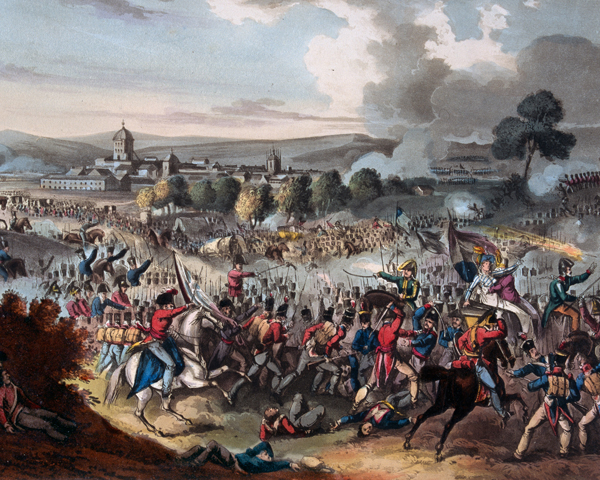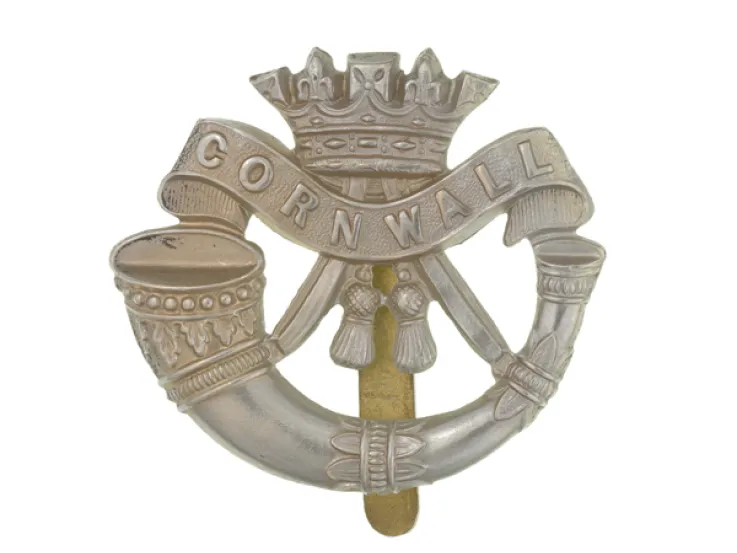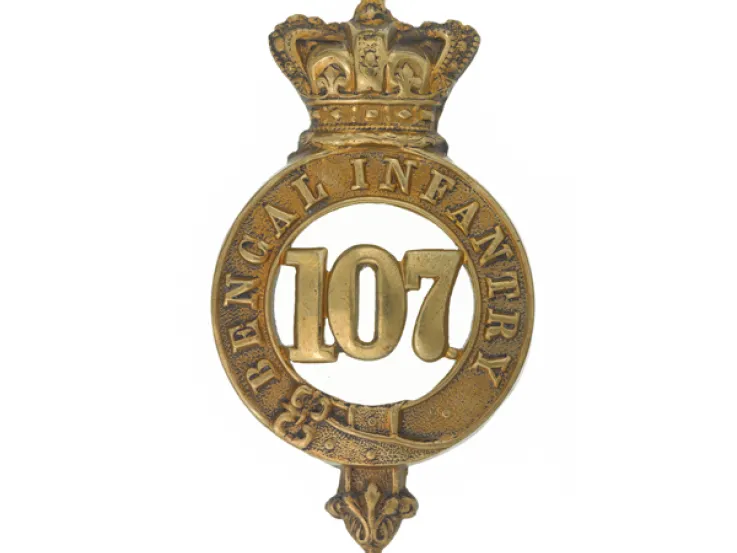Origins
In 1702, Colonel Edward Fox raised a regiment of marines for service during the War of the Spanish Succession (1702-13). It fought at Cadiz and Vigo under Admiral Sir George Rooke and gained its first battle honour in 1705 at Gibraltar.
The regiment was briefly disbanded in 1713, before being re-formed the following year under the colonelcy of Jacob Borr.
18th-century deployments
The regiment remained in the British Isles until 1743, when it was sent to the Continent for service in the War of the Austrian Succession (1742-48). Once there, it took part in the Battles of Dettingen (1743) and Fontenoy (1745).
Recalled home during the Jacobite Rising (1745-46), it was stationed first in Lancashire and then Scotland. After that, it was sent back to Flanders, where it fought at Lauffeld (1747), before returning to Gibraltar.
In 1751, it became known as the 32nd Regiment of Foot, reflecting its rank in the official order of precedence.
The regiment spent the next few decades on garrison duties in Scotland, the West Indies and Ireland. In 1782, it was first given its county association with Cornwall.
In 1783, the 32nd Foot deployed to Gibraltar for a third time, remaining there until the outbreak of the French Revolutionary Wars (1793-1802). It spent the first few years of that conflict in the West Indies and Ireland, before returning to England.
Napoleonic Wars
In 1804, the regiment raised a 2nd Battalion. This served in Britain, Guernsey and Ireland until its disbandment in 1814.
Meanwhile, 1st Battalion joined a force sent to Copenhagen in 1807. It then deployed to the Peninsular War (1808-14), fighting at Rolica (1808) and Vimiero (1808), and taking part in the retreat to Corunna (1809).
Later that year, it took part in the Walcheren Expedition to the Netherlands, before joining the Irish garrison in 1810.
Sent back to the Iberian Peninsula in 1812, 1st Battalion fought at Salamanca (1812), Burgos (1812), Vitoria (1813), Sorauren (1813), Nivelle (1813), Nive (1813), Orthes (1814) and Toulouse (1814).
It returned to Ireland at the end of the Peninsular campaign. But, within a year, it was redeployed to the Continent to fight at Quatre Bras and Waterloo in 1815.
19th-century deployments
From 1817 to 1841, the regiment performed garrison duties on the Ionian Islands (a British protectorate) and in Canada.
It began its first Indian posting in 1846, remaining there for 13 years. It fought at Multan (1848) and Gujerat (1849) during the Second Sikh War (1848-49). It also served during the Black Mountain Expedition (1852-53) against the Yusufzai on the North-West Frontier.
During the Indian Mutiny (1857-59), one company of the 32nd Foot was destroyed at Cawnpore (now Kanpur). The remainder led the defence of Lucknow for three of the five months in 1857 that the city was under siege. Four officers and men were awarded the Victoria Cross for their actions there.
In recognition of its bravery, the regiment was converted to light infantry in May 1858. Its final independent overseas postings were to Mauritius and South Africa between 1866 and 1877.
Legacy
During the Army reforms of 1881, the 32nd (Cornwall Light Infantry) Regiment of Foot was merged with the 46th (South Devonshire) Regiment to form The Duke of Cornwall’s Light Infantry.
Regimental museums
The National Army Museum works with a network of Regimental and Corps Museums across the UK to help preserve and share the history and traditions of the Army and its soldiers.
Discover more about the 32nd (Cornwall Light Infantry) Regiment by visiting Bodmin Keep.













